USS Nevada Shipwreck Located
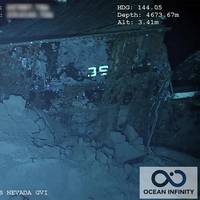
The wreck of one of the U.S. Navy's longest serving battleships has been found 15,400 feet beneath the surface about 65 nautical miles southwest of Pearl Harbor, researchers said Monday.The USS Nevada (BB-36), which served in two world wars over the course of a career that spanned more than three and a half decades, was discovered by underwater and terrestrial archaeology firm SEARCH, Inc. and marine robotics company Ocean Infinity at the bottom of the Pacific.The mission was jointly coordinated between SEARCH's operations center and one of Ocean Infinity's vessels, Pacific Constructor.
Remains of Lost 1800s Whaling Fleet Found
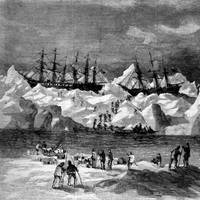
NOAA archaeologists have discovered the battered hulls of two 1800s whaling ships nearly 144 years after they and 31 others sank off the Arctic coast of Alaska in one of the planet's most unexplored ocean regions. The shipwrecks, and parts of other ships, that were found are most likely the remains of 33 ships trapped by pack ice close to the Alaskan Arctic shore in September 1871. The whaling captains had counted on a wind shift from the east to drive the ice out to sea as it had always done in years past.
'Amazingly Intact' WWII-era Aircraft Carrier Surveyed

NOAA, working with private industry partners and the U.S. Navy, has confirmed the location and condition of the USS Independence, the lead ship of its class of light aircraft carriers that were critical during the American naval offensive in the Pacific during World War II. Resting in 2,600 feet of water off California's Farallon Islands, the carrier is "amazingly intact," said NOAA scientists, with its hull and flight deck clearly visible, and what appears to be a plane in the carrier's hangar bay.
Images of Historic San Francisco Wreck Revealed
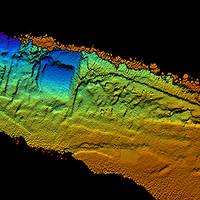
NOAA and partners released three-dimensional sonar maps and images of an immigrant steamship lost more than 100 years ago in what many consider the worst maritime disaster in San Francisco history. On Feb. 22, 1901, in a dense morning fog, the SS City of Rio de Janeiro struck jagged rocks near the Golden Gate Bridge and sank almost immediately, killing 128 of the 210 passengers and crew aboard the ship. Fishermen in the area, hearing the ship's distress calls, helped rescue 82 survivors, many plucked from makeshift rafts and floating wreckage.
First Images of Historic San Francisco Shipwreck
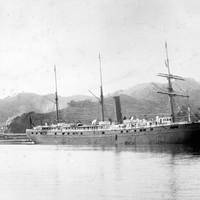
NOAA and its partners released 3D sonar maps and images of an immigrant steamship lost more than 100 years ago in what many consider the worst maritime disaster in San Francisco history. On Feb. 22, 1901, in a dense morning fog, the SS City of Rio de Janeiro struck jagged rocks near the present site of the Golden Gate Bridge and sank almost immediately, killing 128 of the 210 passengers and crew aboard the ship. Fishermen in the area, hearing the ship’s distress calls, helped rescue 82 survivors, many plucked from makeshift rafts and floating wreckage.
19th Century Shipwreck Found off Golden Gate Bridge
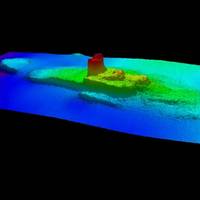
NOAA announced it has found the underwater wreck of the passenger steamer City of Chester, which sank in 1888 in a collision in dense fog near where the Golden Gate Bridge stands today. The announcement was made during a press event at Gulf of Farallones National Marine Sanctuary’s San Francisco headquarters at Crissy Field. NOAA’s predecessor agency first located ship in 1890, two years after it sank. The story of City of Chester will be shared with the public in a future waterfront exhibit NOAA will place at the sanctuary office at Crissy Field. The office is the former U.S.
Walker Wreck Added to Historic Places Register
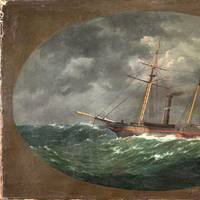
NOAA announced that the wreck of the ship USCS Robert J. Walker, a steamer that served in the U.S. Coast Survey, a predecessor agency of NOAA’s Office of Coast Survey, has been added to the National Register of Historic Places. The Walker served as survey ship, charting the Gulf Coast ‒ including Mobile Bay and the Florida Keys ‒ in the decade before the Civil War. It also conducted early work plotting the movement of the Gulf Stream along the Atlantic Coast. Twenty-one men died when Walker sank in rough seas in the early morning hours of June 21…
Ambitious Students Participate in "Project Shiphunt"

Sony and Intel’s Project Shiphunt team of young explorers, scientists and historians has returned to shore with news of its underwater discovery: shipwrecks of the schooner M.F. Merrick and the steel freighter Etruria, in deep water off of Presque Isle in Lake Huron. The project was completed with “much thanks to pings, processing and 3D,” according to one marine archaeologist. Current Media, the Peabody-and Emmy Award-winning independent television and online network founded in 2005, will air their adventure as the hour-long special, “Project Shiphunt,” on August 30th at 10 p.m. ET.







